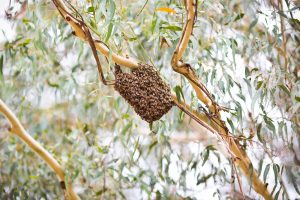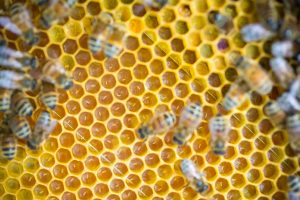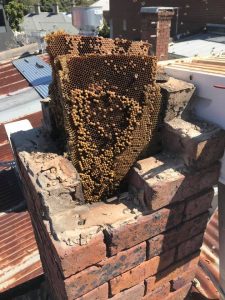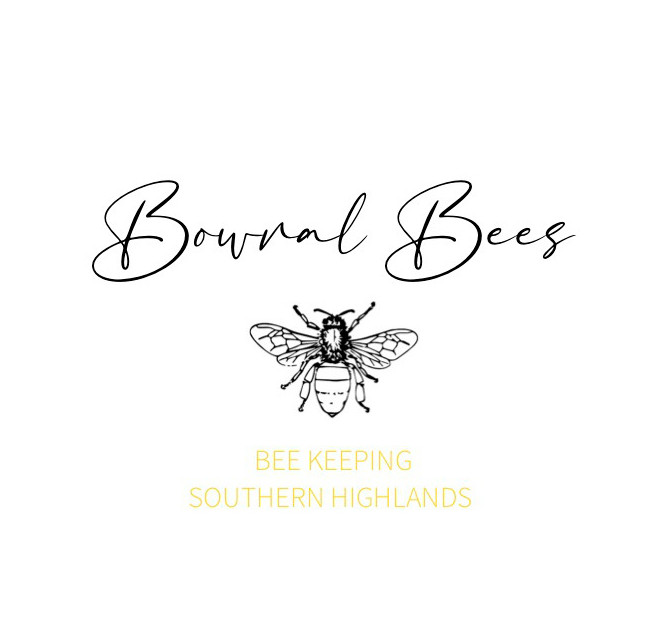Bee Swarm Prevention / Control

With Spring officially here and many blossoms already under way it’s time to turn your attention to swarming.
Bee hives swarm when conditions are ideal and Spring is the main time for it to happen. In the Southern Highlands swarming can occur any time from September to November, with the peak around mid October.
Swarming is the natural way bees reproduce their colony – it’s effectively a split of the hive with the old queen leaving in the swarm with 1/3 to 1/2 the existing bees, leaving behind queen cells that will then hatch new a new queen.
Triggers for swarming:
Lack of space – a major factor in swarming is lack of space in the hive. Once a colony out grows it’s available space they can make the decision to swarm. It’s important to note there are two types of space in the hive: brood and honey. You need to manage both types to keep swarming under control.
Queen age – hives with older queens will be more likely to swarm
Queen genetics – the tendency to swarm is a genetic trait
Weather and food – warm weather and an abundance of food are strong requirements for swarming to occur. In Bowral and the Southern Highlands we can get many beautiful sunny days early in Spring and with lots of blossom trees planted in backyards and Council areas the flow of pollen and nectar is considerable.
Swarm Prevention
It’s important as a bee keeper to reduce all the triggers for swarming in Spring. The main area we have control over is the available space in a hive.
Honey space

Spring blossoms bring a lot of nectar into a hive so the bees will need somewhere to store it! You can manage the honey storage space by adding a full super or removing existing capped frames for harvest.
If you had a 1 box hive over Winter then you need to super very early in Spring.
If you had a 2 box hive over Winter then there should be around 1/3 to 1/2 a super of resources left and still plenty of available space, so adding a super early in Spring is not as critical.
When you do add a super it’s best to ‘under super’ which means moving an existing super to the top of the stack, and placing the new super on top of the queen excluder. This means you can also easily use this new super for ‘checker boarding’ brood frames up (see below).
Brood Space
Managing the available frames a hive has in the brood box is really important throughout Spring. In my view the available brood / laying space is the most critical trigger for swarming.
It’s important to only inspect a brood box on warm day with the air temperature over 18C – this can be difficult in the Highlands in early Spring! The weather is quite variable but you should be able to find a day to open your hive from mid August onwards. As soon as you can inspect the brood box you need to assess the available frames the hive has.
If the hive is using more than 6 frames in an 8 frame box you need to increase the brood space ASAP. This can be easily done by removing frames of capped brood – first carefully shake off all the bees (or sight / check for the queen) and place this frame above a queen excluder in a super. The removed frame is then replaced with an empty frame – either one with new foundation or (the best option) a drawn frame you stored over winter (or was in the super).
Drawn frames in Spring are like gold – you can remove a full brood frame and replace it with a totally empty but ready to go frame.
Taking frames up into a super is a form of ‘checker boarding’ and it can be done as often as required. Just ensure each time the queen is not on the frames you take up to the super.
Keep checking your brood box for space throughout Spring – things can move quickly so an inspection as often as every 10 days will ensure you keep on top of the brood space.
Other Options
Re-queening is a good option but this is ideally done in mid to late Summer so your hive in Spring will have a young queen. Using non-swarming genetics when re-queening will also reduce the risk of swarming.
Should We Prevent Swarms?
There is an idea that because swarming is a natural process we should simply allow it to occur – let the bees do what they want to do. While there is some merit in allowing bees to manage themselves I think allowing swarms to happen is negligent… we are bee KEEP-ers after all.

Here are some reasons to prevent swarms:
First of all you’re greatly reducing your own colony strength and when a new queen hatches and mates you are introducing new genetics into the hive.
Secondly you are reducing your honey harvest as when bees swarm they first gorge on honey to prepare for the swarm. As you’re also reducing your colony size by 1/2 or a 1/3 you’ve also just lost a substantial part of the workforce at the best time of year.
Thirdly a swarm has around a 20% chance of survival in the wild which is not a high survival rate.
Finally a swarm can find a new home in very unwanted places such as chimneys, brick walls, letterboxes, power boxes, and worse! You can see numerous photos on the internet of amazing hives built into these types of locations, but sadly they are often so costly to try to remove the hives are instead terminated. Swarms can also use tree hollows which would usually be homes for native animals like parrots or possums.
Bee Swarms

If you see a bee swarm in Bowral, Moss Vale, Mittagong, Burradoo, East Bowral, Welby, Braemar, Renwick, or any other Southern Highlands or Wingecarribee Shire area please let me know. Text or call Darryn on 0403822281 for local bee swarm collection.
